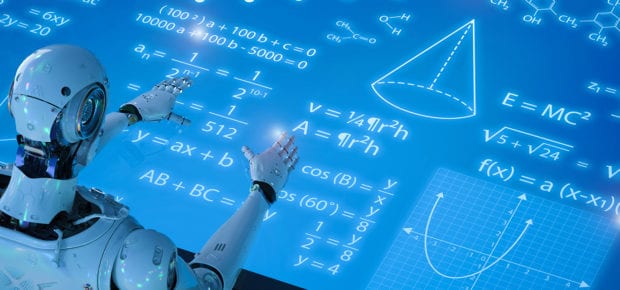May 15, 2018
Just before the new year, IEEE brought together 19 artificial intelligence (AI), machine learning (ML) and cybersecurity experts for a summit to help chart the course of these three disciplines. Their challenge was to answer this question: Given the rapid evolution of AI/ML technologies and the enormous challenges we all face with respect to cybersecurity, what is needed from AI/ML, where can it be best applied, and what must be done over the next 10 years?
Each installment of this three-part series will look at a key part of the trend paper that came out of the meeting. The first: building trust in both cybersecurity technologies and in humans (yes, humans).
As more of our crucial systems have become reliant on the internet, the potential number of cybersecurity attack surfaces has grown accordingly. While artificial intelligence is a relatively new tool in many respects, its newfound capabilities are making it increasingly useful in defending devices and networks (detecting malicious events is just one example).
And yet, since it’s therefore connected, it’s also vulnerable.
The ways in which we protect AI require a fundamental admission: “Building needs to be accomplished with attackers in mind. As with all code, the question related to an AI/ML security compromise is ‘when’ and not ‘if.’”
So, the need for rigorous training and measurement systems emerges. These systems can help avoid compromises in AI/ML software, and when a breach inevitably takes place, they can greatly increase the odds that AI and ML will “fail well.” Both are important factors in maintaining our long-term confidence in the technology.
It’s tempting to imagine a situation in which AI simply takes over the management of cybersecurity from humans. However, the experts at the session were adamant that this is not something to strive for. “Computers and humans can jointly defend against attackers better than either can on their own,” was one conclusion.
One of mankind’s roles here is to effectively train AI used for security. “All training data are not equal,” said the panel. “Builders of AI/ML systems […] should articulate why they are confident that the sample used for training data is, in fact, accurately representative of the entire population of real-world deployment situations that the AI/ML system is likely to encounter.”
And it’s important to remember that not all systems will be secured using AI – “the more sensitive the deployment context, the more important it becomes to retain human oversight as a part of the decision loop. Some contexts may even prove too fragile for the use of AI/ML.” By regularly performing audits and engaging with standards, we can help ensure trust in the systems, as well as in the people responsible for them.
In some cases, having AI and ML run in a closed loop will be just fine. But by and large, “While understanding and trust may grow on a societal level to eventually allow AI/ML to make response decisions, humans must always have a way to veto those decisions.” Together, we can make the future of computing more secure and trustworthy.





 Meaningful Momentum or Running in Place?
Meaningful Momentum or Running in Place? AI Through Our Ages
AI Through Our Ages Liquid Infrastructure: Our Planet's Most Precious Resource
Liquid Infrastructure: Our Planet's Most Precious Resource The Impact of Technology in 2025
The Impact of Technology in 2025 Quantum and AI: Safeguards or Threats to Cybersecurity?
Quantum and AI: Safeguards or Threats to Cybersecurity? Why AI Can't Live Without Us
Why AI Can't Live Without Us Bits, Bytes, Buildings and Bridges: Digital-Driven Infrastructure
Bits, Bytes, Buildings and Bridges: Digital-Driven Infrastructure Impact of Technology in 2024
Impact of Technology in 2024 Emerging AI Cybersecurity Challenges and Solutions
Emerging AI Cybersecurity Challenges and Solutions The Skies are Unlimited
The Skies are Unlimited Smart Cities 2030: How Tech is Reshaping Urbanscapes
Smart Cities 2030: How Tech is Reshaping Urbanscapes Impact of Technology 2023
Impact of Technology 2023 Cybersecurity for Life-Changing Innovations
Cybersecurity for Life-Changing Innovations Smarter Wearables Healthier Life
Smarter Wearables Healthier Life Infrastructure In Motion
Infrastructure In Motion The Impact of Tech in 2022 and Beyond
The Impact of Tech in 2022 and Beyond Cybersecurity, Technology and Protecting Our World
Cybersecurity, Technology and Protecting Our World How Technology Helps us Understand Our Health and Wellness
How Technology Helps us Understand Our Health and Wellness The Resilience of Humanity
The Resilience of Humanity Harnessing and Sustaining our Natural Resources
Harnessing and Sustaining our Natural Resources Creating Healthy Spaces Through Technology
Creating Healthy Spaces Through Technology Exceptional Infrastructure Challenges, Technology and Humanity
Exceptional Infrastructure Challenges, Technology and Humanity The Global Impact of IEEE's 802 Standards
The Global Impact of IEEE's 802 Standards Scenes of our Cyber Lives: The Security Threats and Technology Solutions Protecting Us
Scenes of our Cyber Lives: The Security Threats and Technology Solutions Protecting Us How Millennial Parents are Embracing Health and Wellness Technologies for Their Generation Alpha Kids
How Millennial Parents are Embracing Health and Wellness Technologies for Their Generation Alpha Kids Space Exploration, Technology and Our Lives
Space Exploration, Technology and Our Lives Global Innovation and the Environment
Global Innovation and the Environment How Technology, Privacy and Security are Changing Each Other (And Us)
How Technology, Privacy and Security are Changing Each Other (And Us) Find us in booth 31506, LVCC South Hall 3 and experience the Technology Moon Walk
Find us in booth 31506, LVCC South Hall 3 and experience the Technology Moon Walk Virtual and Mixed Reality
Virtual and Mixed Reality How Robots are Improving our Health
How Robots are Improving our Health IEEE Experts and the Robots They are Teaching
IEEE Experts and the Robots They are Teaching See how millennial parents around the world see AI impacting the lives of their tech-infused offspring
See how millennial parents around the world see AI impacting the lives of their tech-infused offspring Take the journey from farm to table and learn how IoT will help us reach the rising demand for food production
Take the journey from farm to table and learn how IoT will help us reach the rising demand for food production Watch technical experts discuss the latest cyber threats
Watch technical experts discuss the latest cyber threats Explore how researchers, teachers, explorers, healthcare and medical professionals use immersive technologies
Explore how researchers, teachers, explorers, healthcare and medical professionals use immersive technologies Follow the timeline to see how Generation AI will be impacted by technology
Follow the timeline to see how Generation AI will be impacted by technology Learn how your IoT data can be used by experiencing a day in a connected life
Learn how your IoT data can be used by experiencing a day in a connected life Listen to technical experts discuss the biggest security threats today
Listen to technical experts discuss the biggest security threats today See how tech has influenced and evolved with the Games
See how tech has influenced and evolved with the Games Enter our virtual home to explore the IoT (Internet of Things) technologies
Enter our virtual home to explore the IoT (Internet of Things) technologies Explore an interactive map showcasing exciting innovations in robotics
Explore an interactive map showcasing exciting innovations in robotics Interactively explore A.I. in recent Hollywood movies
Interactively explore A.I. in recent Hollywood movies Get immersed in technologies that will improve patients' lives
Get immersed in technologies that will improve patients' lives